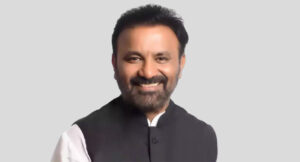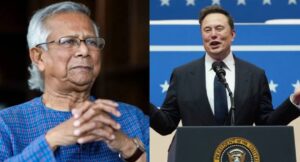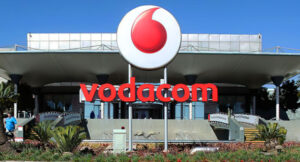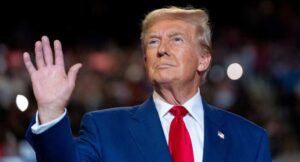Salary increments in India’s USD 250 billion IT services sector are projected to be moderate in fiscal year 2025, as companies navigate a complex landscape of global economic uncertainties, evolving skill demands, and the increasing adoption of artificial intelligence (AI), according to experts.
Industry experts predict an average wage increase of 4-8.5 per cent, a notable step down from previous years, signalling a shift towards more pragmatic compensation strategies.
“The outlook for salary hikes this year is quite cautious,” noted Krishna Vij, VP, of TeamLease Digital.
Industry players are looking at increments in the 4 per cent to 8.5 per cent range, which is lower than what we’ve seen in previous years. This slowdown is largely due to global economic challenges, reduced discretionary spending, and shifting business priorities.
” Companies are being more conservative with their salary budgets, and many have even pushed their appraisal cycles beyond the usual April-June period”, she said, which has made salary revisions less predictable in the current scenario.
“Organisations are shifting to skills-based pay, leveraging Tier II hiring for cost efficiency. Instead of salary hikes, retention bonuses, ESOPs, and project-based incentives are being implemented as compensation strategies,” Vij said.
Reed & Willow CEO Janoo Motiani also gave a similar expected hike range, pegging it between 5-8.5 per cent.
“The days of double-digit hikes seem behind us–at least for now. The industry is settling into a more pragmatic rhythm, with average hikes expected to hover between 5 per cent and 8.5 per cent. This aligns with the cautious optimism seen across the sector” she said.
“TCS has taken the lead, announcing hikes ranging from 4-8 per cent effective April 2025, setting the tone for the rest of the industry. However, Infosys, HCLTech, Wipro, and Tech Mahindra are holding off on final announcements, likely waiting to gauge market movements in Q2 before locking in their plans,” she shared.
While this might seem like a conservative approach, she said, it reflects the market reality–tempered growth, the rise of AI-led efficiencies, and shifting client demands are influencing how companies allocate compensation budgets.
Salary increments in India’s USD 250 billion IT services sector are projected to be moderate in fiscal year 2025, as companies navigate a complex landscape of global economic uncertainties, evolving skill demands, and the increasing adoption of artificial intelligence (AI), according to experts.
Industry experts predict an average wage increase of 4-8.5 per cent, a notable step down from previous years, signalling a shift towards more pragmatic compensation strategies.
“The outlook for salary hikes this year is quite cautious,” noted Krishna Vij, VP, of TeamLease Digital.
Industry players are looking at increments in the 4 per cent to 8.5 per cent range, which is lower than what we’ve seen in previous years. This slowdown is largely due to global economic challenges, reduced discretionary spending, and shifting business priorities.
” Companies are being more conservative with their salary budgets, and many have even pushed their appraisal cycles beyond the usual April-June period”, she said, which has made salary revisions less predictable in the current scenario.
“Organisations are shifting to skills-based pay, leveraging Tier II hiring for cost efficiency. Instead of salary hikes, retention bonuses, ESOPs, and project-based incentives are being implemented as compensation strategies,” Vij said.
Reed & Willow CEO Janoo Motiani also gave a similar expected hike range, pegging it between 5-8.5 per cent.
“The days of double-digit hikes seem behind us–at least for now. The industry is settling into a more pragmatic rhythm, with average hikes expected to hover between 5 per cent and 8.5 per cent. This aligns with the cautious optimism seen across the sector” she said.
“TCS has taken the lead, announcing hikes ranging from 4-8 per cent effective April 2025, setting the tone for the rest of the industry. However, Infosys, HCLTech, Wipro, and Tech Mahindra are holding off on final announcements, likely waiting to gauge market movements in Q2 before locking in their plans,” she shared.
While this might seem like a conservative approach, she said, it reflects the market reality–tempered growth, the rise of AI-led efficiencies, and shifting client demands are influencing how companies allocate compensation budgets.
“Demand is driven by digital transformation, GCC expansion, and talent scarcity. Niche roles like DevOps, data science, and blockchain development are also seeing premium hikes, especially for experienced professionals with specialised skills,” she added.
Adecco India observes a shift towards more agile performance management, with companies increasingly adopting mid-year or quarterly reviews to align compensation more dynamically with performance.
Further, companies are prioritising upskilling and reskilling initiatives to bridge skill gaps, and employees who actively participate in learning programs may see better salary growth and career progression.
Non-monetary benefits like flexible work, healthcare, and wellness programs are also becoming crucial retention tools, especially for companies unable to offer top-tier salary hikes.
According to the India Brand Equity Foundation (IBEF), the IT industry accounted for 7 per cent of India’s GDP, as of FY24. PTI









